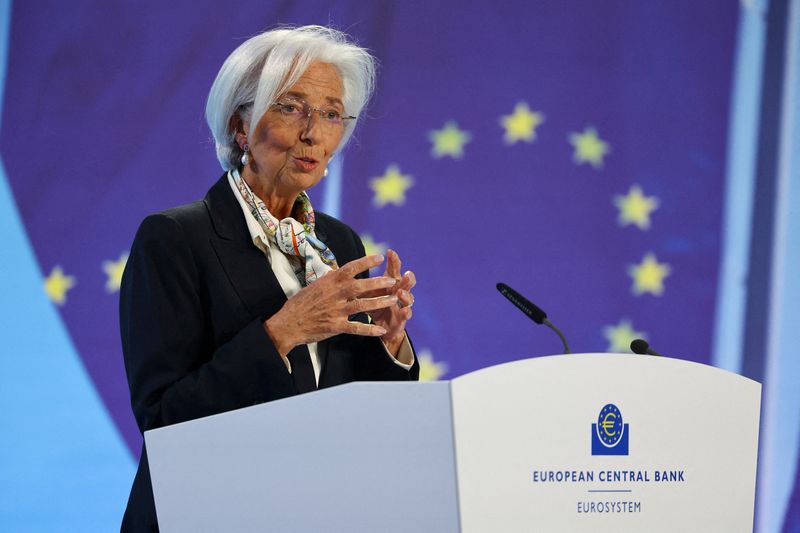
© Reuters. European Central Bank (ECB) President Christine Lagarde speaks during a press conference following the Governing Council’s monetary policy meeting at the ECB headquarters in Frankfurt, Germany, March 7, 2024. REUTERS/Kai Pfaffenbach/File Photo
By Balazs Koranyi and Francesco Canepa
FRANKFURT (Reuters) -The European Central Bank cannot commit to a pre-set number of interest rate cuts even after it starts reducing borrowing costs as the pace of cuts will depend on incoming data, ECB President Christine Lagarde said on Wednesday.
Many ECB policymakers have expressed support for a first reduction in borrowing costs from their current record highs, most likely in June, with the debate now focused on how many more cuts would follow.
But Lagarde appeared to try to dampen such speculation on Wednesday even as she acknowledged that incoming data about wages and inflation had been encouraging.
“Our decisions will have to remain data dependent and meeting-by-meeting, responding to new information as it comes in,” Lagarde said. “This implies that, even after the first rate cut, we cannot pre-commit to a particular rate path,” she told a conference in Frankfurt.
Echoing Lagarde, the ECB’s chief economist Philip Lane said he and colleagues will be “calibrating for a long time to come the balance between the level of restrictiveness we need and the rate of progress we see in underlying inflation and wages”.
Inflation in the euro zone has fallen from a double-digit percentage increase in the autumn of 2022 to 2.6% last month.
And Lagarde hinted that this fall was likely to be “more durable and less beholden to assumptions about commodity prices” than in the past due to an expected fall in underlying inflation, which strip out volatile food and energy prices.
But she spelled out the conditions needed for the ECB to start cutting rates: slowing wage growth, a continued fall in inflation and new internal projections confirming that price growth is returning to its 2% target.
“If these data reveal a sufficient degree of alignment between the path of underlying inflation and our projections, and assuming transmission remains strong, we will be able to move into the dialling back phase of our policy cycle and make policy less restrictive,” Lagarde said.
The ECB will hold policy meetings on April 11, June 6, July 18, Sept 12, Oct 17 and Dec 12.
Some ECB governors, including Latvia’s Martins Kazaks and the Netherlands’ Klaas Knot have highlighted the advantage of moving when new forecasts are published — that is in June, September and December.
By contrast, Greek central bank governor Yannis Stournaras said two cuts before the ECB’s summer break in August seemed reasonable, followed by two more by the end of the year.
Frederik Ducrozet, head of macroeconomic research at Pictet Wealth Management, said Lagarde’s comments on Wednesday would form the basis for reaching consensus among policymakers.
“We expect the ECB to cut rates in June, pause in July (although the doves may push harder), and resume cutting at every meeting from September,” he said on Twitter.
(Writing By Francesco Canepa; Editing by Sharon Singleton and Toby Chopra)


